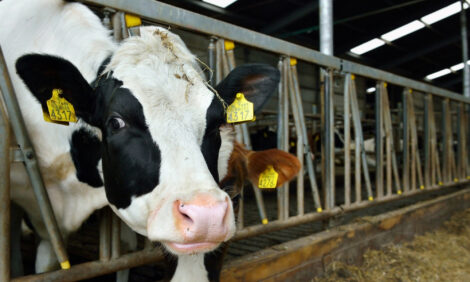



Cows Not All Equal in Grass Staggers Risk
GLOBAL - Not all cattle are at equal risk of magnesium deficiency this spring, say advisers as turn-out approaches for many northern hemisphere operations.Older cattle are more at risk from grass tetany or grass staggers, and chance of deficiency increases after calving, with diligence particularly important for the first four months post-calving.
These factors all relate to magnesium requirements, with weather, animal stress and grass quality all having a bearing on magnesium availability.
This is South Dakota State University’s advice to its producers, with Cow/Calf expert, Adele Hartley, prescribing pasture species options as long-term prevention strategies for grass tetany. read more
“Incorporate more legumes into pasture mixes, she advises. “Legumes have higher levels of magnesium and calcium than do immature grasses resulting in a better balance across the pasture.”
Delaying turn-out can also help, although Mrs Hartley acknowledges the need to utilize pasture. She advises that waiting for grasses to be at least four inches tall allows pasture to replenish.
She says that prevention is the best way and cattle should be supplemented with minerals.
“Free-choice high magnesium mineral should contain 12 to 15 per cent magnesium from magnesium oxide,” says Ohio advisor, Rory Lewandowski.
He highlights the higher risk animals as older cows that have recently calved.
“Mature animals are more at risk than young animals because mature animals are not able to mobilize Mg from bones as readily as a young animal when blood Mg levels drop.”
Good practice is to supplement at least a week ahead of the grazing period, he adds. As weather improves and becomes more consistent, the forages mature.
David Thornton, technical manager at Rumenco, in the UK, says that spring grasses are not enough due to dry matter content.
“The low magnesium content of spring grass, between 0.1 per cent and 0.2 per cent dry matter (DM), plus the fact that it passes through the rumen quicker, all result in very low levels of magnesium absorption from grazing pastures alone,” says Mr Thornton.
He warns that quantity of magnesium is not important but quality of delivery is vital as research shows that more magnesium sources in a supplement, the greater risk of magnesium ‘lock-up’ is in cows.
Producers, therefore, need to be assured over absorption and smaller particles are best.
“When you compare two sources of magnesium oxide – a granular and powdered form – the powdered magnesium oxide will deliver a higher rate of magnesium absorption in cattle.”
TheCattleSite News Desk


